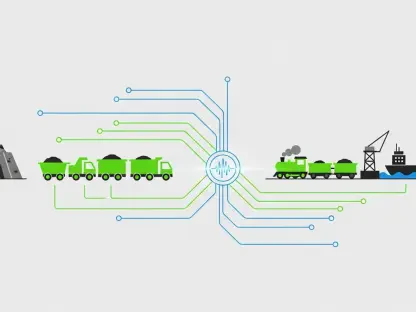The world of project management is intricately woven around effective scheduling, a critical determinant of a project’s success story. A well-constructed project schedule doesn’t merely list deadlines but embodies a blueprint that coordinates team efforts and ensures harmony between the big picture and individual contributions. By converting structured plans into coordinated actions, effective scheduling transforms potential pitfalls into manageable timelines and resource allocations. This guide will provide the necessary insights to develop project schedules that propel projects toward success.
Definition and Importance of Project Scheduling
Project scheduling involves organizing tasks, resources, and timelines to balance the project’s deliverability within the set time. It serves as a roadmap for execution, outlining the necessary steps to be undertaken, who will be responsible, and when they need to be completed.
Effective scheduling can significantly elevate project management practices, aligning strategic objectives with actionable plans. It ensures coordination across departments, thereby reducing resource conflicts and facilitating informed decision-making. With a comprehensive schedule in place, teams and stakeholders can anticipate roadblocks, optimize resources, and maintain clear communication, underpinning a project’s success.
Understanding Project Scheduling Fundamentals
The concept of scheduling has evolved from traditional methods to sophisticated digital platforms, reflecting industries’ growing needs for efficiency. Initially, project scheduling was limited to manual charting methods, which, while functional, lacked scalability for large projects. Nowadays, project management thrives on digital tools that enhance the intricacies of scheduling, tapping into automation and real-time updates.
An effective project schedule is characterized by key components such as defined milestones, task dependencies, and the critical path. These elements form a structured framework that establishes the duration, prioritization, and resource allocation necessary for a project’s successful execution. Efficient project scheduling facilitates timely completion, optimally utilizing resources while mitigating risks inherent in project management.
Step-by-Step Guide to Building Project Schedules
Step 1: Define Your Project Goals and Scope
Defining clear project goals and scope forms the foundation of an effective schedule. Having a precise understanding of what the project aims to achieve sets a baseline for the tasks and resources required. Proper planning at this stage is crucial to avoid scope creep—a phenomenon where a project’s requirements expand beyond its original objectives, risking unnecessary delays and resource strains.
Step 2: Breakdown Tasks and Identify Dependencies
Dissecting the project into smaller, manageable tasks is vital in creating a flowchart for execution. Identifying task dependencies—where one task relies on the completion of another—ensures tasks are sequenced logically. Establishing these relationships allows for smoother transitions between tasks, maintaining progress and preventing bottlenecks.
Step 3: Estimate Task Durations and Assign Resources
Estimating how long each task will take is key to realistic scheduling. Allocating resources based on availability and skill level further defines a project’s timeline. By maintaining realistic timeframes and resource allocations, projects are more likely to stay on track without overburdening team members or overstretching resources.
Step 4: Choose the Right Visualization Technique
Adopting the right visualization tools, such as Gantt charts, enhances the clarity of a project’s timeline. These visual tools organize tasks, milestones, and dependencies in an accessible format, allowing stakeholders to grasp the project’s status quickly. Effective visualization aids in communication and ensures everyone remains aligned with the project’s progress.
Step 5: Maintain and Adjust Your Schedule Dynamically
An adaptive schedule acts as a “living document,” fostering flexibility and responsiveness to changes. Regularly updating the schedule according to progress and unforeseen challenges ensures the project remains aligned with its goals. Dynamic maintenance of the schedule helps navigate obstacles swiftly, adjusting timelines and resources as necessary to achieve project objectives.
Quick Recap of the 5 Steps
- Define Project Goals and Scope: Lay out a clear understanding of the project’s objectives and deliverables to avoid scope creep.
- Breakdown Tasks and Identify Dependencies: Dissect the project into tasks and establish clear dependencies to ensure logical sequencing.
- Estimate Task Durations and Assign Resources: Evaluate task durations and resource availability to maintain realistic progress.
- Choose the Right Visualization Technique: Utilize visual tools like Gantt charts to present the schedule clearly to team members and stakeholders.
- Maintain and Adjust the Schedule Dynamically: Keep the schedule flexible to adapt to changes and maintain project alignment.
Application and Trends in Project Scheduling
The methods detailed here integrate seamlessly across various industries—from software development to construction. Adaptability in using these steps ensures the process suits the particular requirements and complexities of any project. Looking ahead, emerging trends such as artificial intelligence and automation are anticipated to revolutionize project scheduling. These technologies promise precision in predicting timelines and optimizing resources, although they also pose challenges such as requiring alignment and feedback from stakeholders.
Incorporating advanced technologies will enhance efficiency, performing intricate forecasting and adjustments automatically. This digital evolution improves scheduling’s role in streamlining processes, solving complex project management challenges, and fostering collaborative efforts across departments.
Conclusion and Next Steps
This guide has equipped you with the foundational steps to create effective project schedules, emphasizing their role in achieving project success through structured planning and execution. As project landscapes continuously evolve, embracing adaptive strategies and incorporating emerging technologies offers a navigable path forward. Implementing effective scheduling is a strategic advantage, driving projects to meet their objectives successfully.
The journey towards mastering project scheduling doesn’t conclude here; it involves continuous learning and adaptation. Harness the tools and insights shared in this guide to transition from planning to execution, overcoming traditional challenges and steering toward efficient project management.









